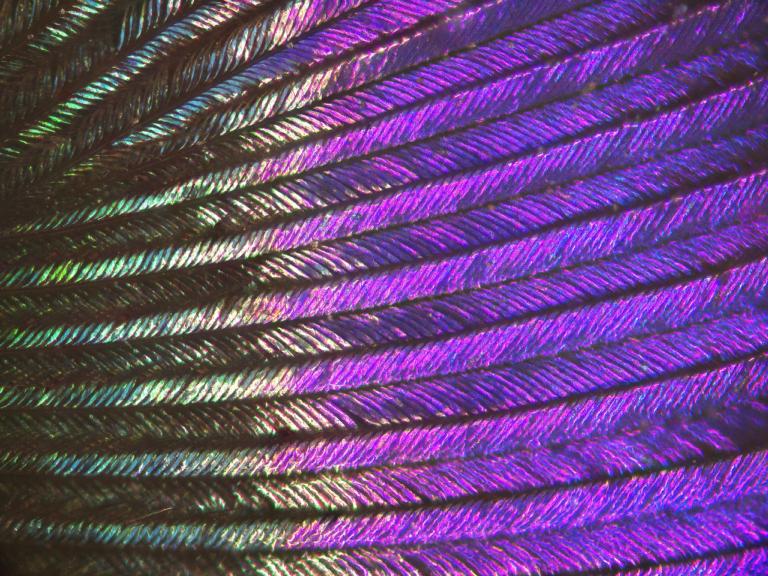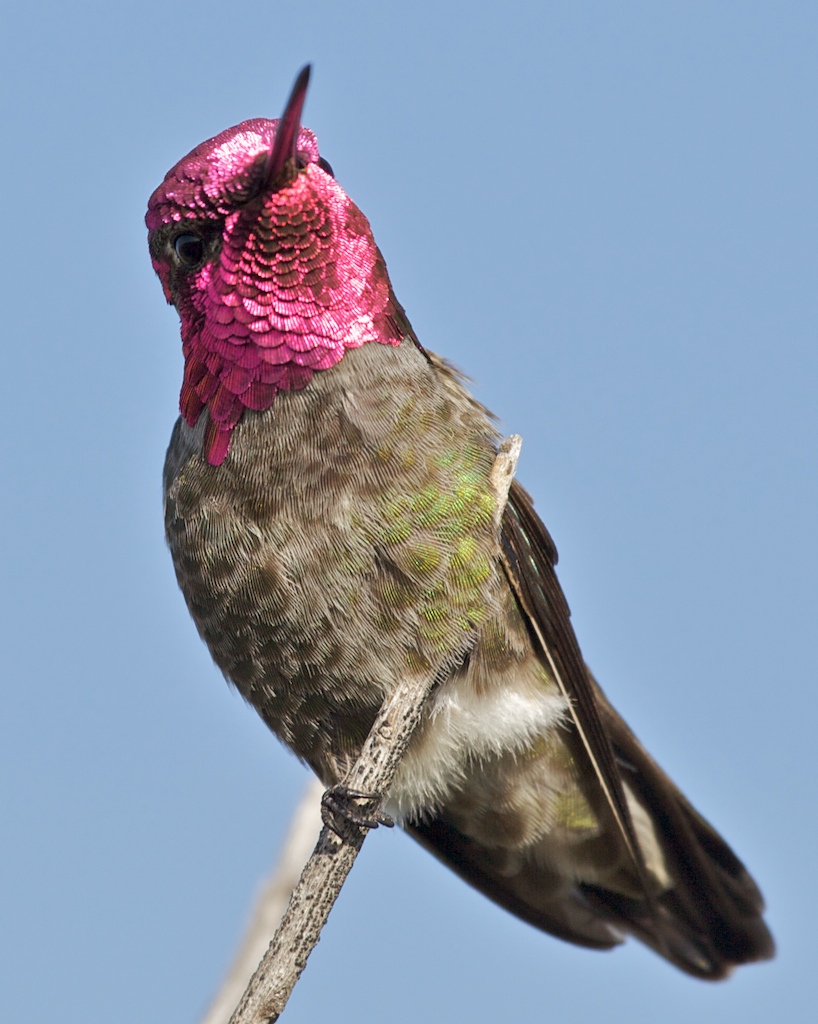
Birds are known for their bright plumage colors, some of which depend on the direction at which they are observed. Numerous studies have demonstrated that the precise arrangement of melanosomes inside the barbule determines the feather color (hue), yet important components like feather morphology are rarely considered. In this project we explore the color of plumages of iridescent birds, and conduct phylogenetic analyses to elucidate macroevolutionary patterns of iridescent coloration.

Background
Some of the bright plumage colors of birds seem to change depending on the direction at which they are observed. Think for example of the pink/green neck of a feral pigeon or the throat of a hummingbird. These dynamic colors are called iridescent and are produced without any pigments, by organized nanostructures inside the feathers. More precisely, inside feather barbules (i.e. the smallest branches of a feather), there are numerous organelles that contain melanin (therefore called melanosomes). Numerous studies have demonstrated that the precise arrangement of melanosomes inside the barbule determines the feather color (hue). However, important components like feather morphology are rarely considered despite playing an important role in modulating overall light reflectivity. In this project we measure the color of plumages from a broad sample of iridescent birds, use microscopy to determine the precise mechanism producing the observed feather color and obtain feather morphometrics to determine the contribution of microstructural elements to the production of iridescence. We will also conduct phylogenetic analyses to understand macroevolutionary patterns of iridescent coloration among birds.
Objectivesand goals
This internship project has two main aims:
1) To determine the relative contributions of feather nano and microstructures to the production of iridescent coloration among birds.
2) To reveal broad macroevolutionary patterns of iridescence.
Methodsand approach
During this internship project you will sample bird specimens from the vast collection at Naturalis, collect feathers from bird skins, and measure feather reflectance using spectrophotometry. Moreover, you will use optical and electron microscopy to analyze feather morphology and perform phylogenetic comparative analyses on the data collected.
Requirements
The student will work for a duration of 6 months on data collection and analyses. Students with a particular interest in Comparative methods, Functional morphology and Trait evolution are preferred.
The project is suitable for one master student or one master and one bachelor student.